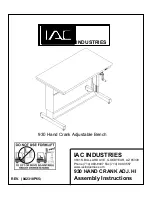
Appendix A. Operating systems specifics
307
The management of MPIO devices is described in the “Managing MPIO-Capable Devices”
section of the System Management Guide: Operating System and Devices for AIX 5L:
http://publib16.boulder.ibm.com/pseries/en_US/aixbman/baseadmn/manage_mpio.htm
Determine the installed SDDPCM level
You use the same command as for SDD,
lslpp -l "*sdd*"
, to determine the installed level
of SDDPCM. It will also tell you whether you have SDD or SDDPCM installed.
SDDPCM software provides useful commands such as:
pcmpath query device
to check the configuration status of the devices
pcmpath query adapter
to display information about adapters
pcmpath query essmap
to display each device, path, location, and attributes
Useful MPIO commands
The
lspath
command displays the operational status for the paths to the devices, as shown in
Example A-8. It can also be used to read the attributes of a given path to an MPIO-capable
device.
Example: A-8 lspath command result
{part1:root}/ -> lspath |pg
Enabled hdisk0 scsi0
Enabled hdisk1 scsi0
Enabled hdisk2 scsi0
Enabled hdisk3 scsi7
Enabled hdisk4 scsi7
...
Missing hdisk9 fscsi0
Missing hdisk10 fscsi0
Missing hdisk11 fscsi0
Missing hdisk12 fscsi0
Missing hdisk13 fscsi0
...
Enabled hdisk96 fscsi2
Enabled hdisk97 fscsi6
Enabled hdisk98 fscsi6
Enabled hdisk99 fscsi6
Enabled hdisk100 fscsi6
The
chpath
command is used to perform change operations on a specific path. It can either
change the operational status or tunable attributes associated with a path. It cannot perform
both types of operations in a single invocation.
The
rmpath
command unconfigures or undefines, or both, one or more paths to a target
device. It is not possible to unconfigure (undefine) the last path to a target device using the
rmpath
command. The only way to do this is to unconfigure the device itself (for example, use
the
rmdev
command).
Refer to the man pages of the MPIO commands for more information.
Restriction:
A point worth considering when deciding between SDD and MPIO is, that the
IBM TotalStorage SAN Volume Controller does not support MPIO at this time. For updated
information refer to:
http://www-03.ibm.com/servers/storage/support/software/sanvc/installing.html
Summary of Contents for System storage DS6000 Series
Page 2: ......
Page 5: ...iii...
Page 6: ...iv DS6000 Series Concepts and Architecture...
Page 18: ...xvi DS6000 Series Concepts and Architecture...
Page 24: ...xxii DS6000 Series Concepts and Architecture...
Page 26: ...2 DS6000 Series Concepts and Architecture...
Page 44: ...20 DS6000 Series Concepts and Architecture...
Page 46: ...22 DS6000 Series Concepts and Architecture...
Page 68: ...44 DS6000 Series Concepts and Architecture...
Page 88: ...64 DS6000 Series Concepts and Architecture...
Page 136: ...112 DS6000 Series Concepts and Architecture...
Page 138: ...114 DS6000 Series Concepts and Architecture...
Page 218: ...194 DS6000 Series Concepts and Architecture...
Page 242: ...218 DS6000 Series Concepts and Architecture...
Page 266: ...242 DS6000 Series Concepts and Architecture...
Page 298: ...274 DS6000 Series Concepts and Architecture...
Page 352: ...328 DS6000 Series Concepts and Architecture...
Page 392: ...368 DS6000 Series Concepts and Architecture...
Page 396: ...372 DS6000 Series Concepts and Architecture...
Page 404: ...DS6000 Series Concepts and Architecture DS6000 Series Concepts and Architecture...
Page 405: ......
















































